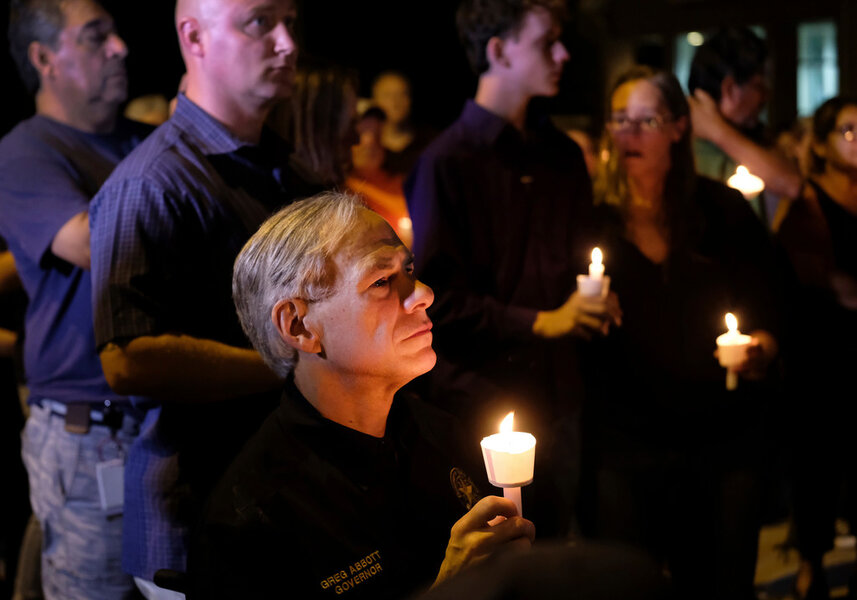Why mass shootings at a church are different
Loading...
Just hours after the Nov. 5 mass shooting at a Baptist church in Sutherland Springs, Texas, about a hundred people held a vigil for the victims. Some mourned, some prayed, some held candles high. To one local resident, Mike Gonzales, the vigil’s purpose was both simple and grand: “to show the world that now, in the midst of darkness, there is light.”
His point reflects the idea that houses of worship play a larger role in society than merely a place for people to attend religious services. They are practical purveyors of hope, forgiveness, and love in everyday life. And when a sacred place, whether it be a church, temple, or mosque, is the scene of violence, those qualities of thought are evermore present and in demand. They allow people to displace the hate behind a killing rather than respond with hate.
Violence at houses of worship is done for various reasons, from bigotry to vendetta. The 2015 massacre of nine black church members in Charleston, South Carolina, was a racist act. The 2012 killing of six at a Wisconsin Sikh temple was done out of religious prejudice. So far, preliminary evidence in the Texas killings suggests the motive might be revenge at the killer’s former in-laws who sometimes attended the church.
The FBI reports that only 3.8 percent of the mass killings in the United States between 2000 and 2013 took place at churches. Yet any violence at religious sites seems particularly out of place. Most churches choose to keep an open door with minimal security. They seek to be a welcoming community, a sanctuary from suffering and sin, and a prompter of prayer and humility.
“Evil attacks the weakest,” said the Archbishop of Canterbury, Justin Welby, after the 2016 killing of a Catholic priest in France. But, he added, evil is defeated by the truth and love of Christ Jesus.
For a community hit by violence at a house of worship, prayer vigils are often the start of a process of coming to terms with such acts and in finding peace. Some find solace in forgiving the killer. Others find peace in renewing the bonds of a sacred community. The point, as Mr. Gonzales said, is to show light in the midst of darkness.





